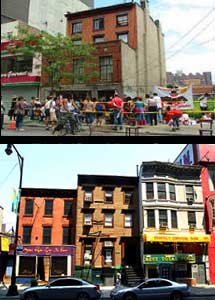The Brooklyn Historical Society (BHS), the Weeksville Heritage Center and Irondale Ensemble Project have been chosen to receive two major federal grants to fund their joint project “In Pursuit of Freedom,” a multifaceted program that memorializes the history of abolitionism and the Underground Railroad in Brooklyn.
The U.S. Department of Education Office of Postsecondary Education’s Underground Railroad Educational and Cultural (URR) Program has awarded BHS $936,000; and the National Endowment for the Humanities (NEH) has awarded $400,000 to the program, which was originally announced last year....
These awards complement $2 million already granted by the city in 2008 through a Request for Proposals that was initiated by the Downtown Brooklyn Development Corporation.
The project to commemorate Brooklyn’s abolitionist history stems, at least in part, from a controversy several years ago, over an urban-renewal plan to destroy several 19th century homes on Duffield Street that were reportedly linked to the Underground Railroad. The Duffield Street houses have since been saved.
One of the Duffield Street homes, number 227, was spared in a settlement with the city in 2007. Its owner, Joy Chatel, pledged to continue giving tours of her home and using it as a center where people can learn about the Underground Railroad and abolitionist activity in Brooklyn. Another known Underground Railroad site in Brooklyn is the former Bridge Street A.W.M.E. Church building, now part of Polytechnic University....
All aspects of the project will utilize historic artifacts and documents held by the Brooklyn Historical Society.
Among these are a rare copy of the Emancipation Proclamation signed by Abraham Lincoln; original letters written by Henry Ward Beecher and fellow abolitionist William Wilson; propaganda tracts; numerous slave bills of sale; as well as newspapers, anti-slavery pamphlets from the 1840s; and early photographs of the people and places crucial to the story.
To read the original article, click here.
